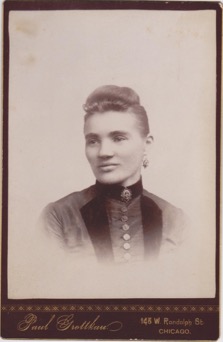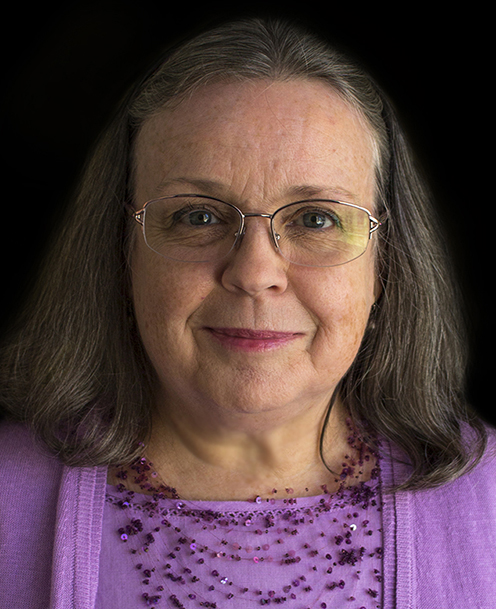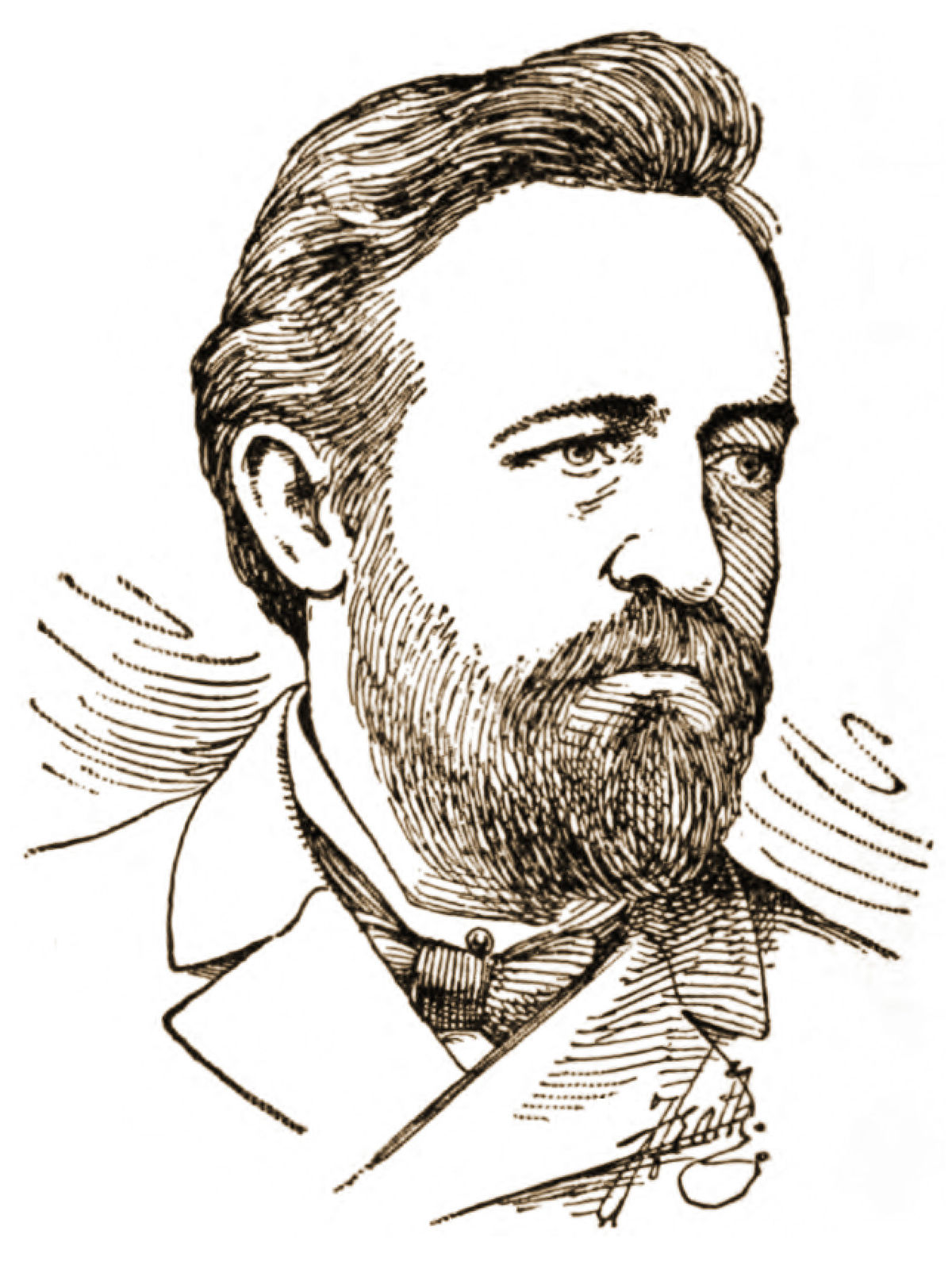 [When, several years ago, my friend and colleague Colleen Thornton introduced me to the research she had begun based on a photograph she purchased on eBay, I offered her as much space as she needed at the blog for publication of her results.
[When, several years ago, my friend and colleague Colleen Thornton introduced me to the research she had begun based on a photograph she purchased on eBay, I offered her as much space as she needed at the blog for publication of her results.
Continuing below, the outcome of Thornton’s painstaking inquiry introduces to the medium’s history two extraordinary figures: a German-born 19th-century U.S.-based anarcho-socialist photographer, Paul Grottkau, and his subject, the African-American anarcho-socialist Lucy Parsons, widow of one of the men railroaded to public hanging in the prosecution of the suspects of the Chicago Haymarket Riot. In the cabinet portrait that Thornton discovered the destinies of these two notable left-wing figures intersect, as her essay makes clear.
Unlike the Capa D-Day project here at the blog, which functions as the running journal or diary of an ongoing investigation, Thornton offers a self-contained, persuasive, and compelling analysis, a prime example of what close attention to individual photographs can reveal. This is a first-rate work of scholarship, and a significant addition to the literature. It marks the blog’s first (but perhaps not last) publication of a fully resolved piece of research.
Thornton’s article as written comes in two parts. I will publish each part in three installments — Part I this week, Part II early in August. Click here for the first installment of Part I, and here for the third installment. — A.D.C.]
•
Paul Grottkau: Anarchist Photographer, Part I
by Colleen Thornton (continued)
•
Milwaukee, 1886
… Before the Haymarket Bombing happened in Chicago in the spring of 1886, Paul Grottkau had relocated to Milwaukee, Wisconsin. There he started a German-language newspaper, the Milwaukee’r Arbeiter-Zeitung (Milwaukee Workers’ News), assumed leadership of the Milwaukee Central Labor Union, and became involved in a series of major worker strikes and demonstrations that ultimately resulted in violent, fatal confrontation with the authorities, who were supported by the region’s industrialists.
Virtually at the same moment that events were leading up to the Haymarket Bombing in Chicago, Grottkau was at the center of an large-scale workers’ strike at the Milwaukee Iron Company’s rolling mill in Bay View. (Then commonly called the Bay View Rolling Mill, or North Chicago Rolling Mill, this corporation eventually turned into United States Steel).
Culminating in what became known as the “Bay View Massacre” on Thursday, May, 6, 1886,[1] the strike began on the previous Saturday, May 1st — May Day, at the time traditionally an occasion for public displays of worker solidarity. Approximately 7,000 building-trades workers — German, U.K. and American-born — joined with 5,000 Polish laborers to form a strike force 12,000 strong. The National Guard, there under orders from Republican Governor Jeremiah M. Rusk, and a militia organized by the Polish business community, fired on these workers and their supporters, killing and injuring many, including innocent bystanders.
Grottkau had tried to defuse the situation by addressing the strikers in his native German, but the authorities assumed he was inciting the crowd, and arrested him as an instigator. Grottkau served a brief prison sentence (six weeks of a one-year sentence), during which time he ran unsuccessfully for mayor of Milwaukee.[2] In attendance at his sentencing in Milwaukee on May 7, 1887, was Mrs. Albert R. [Lucy] Parsons, who was herself awaiting the execution of her husband for the Haymarket Bombing.[3]
Grottkau continued publishing his Milwaukee newspaper until 1888, when it was sold. He then returned to Chicago to take up his former post at the Chicagoer Arbeiter-Zeitzung,[4] and opened his photo studio business.
•
![Cabinet card logo ca. 1888-89 for studio of Paul Grottkau, 148 W. Randolph St. Chicago. [Collection of the author]](https://www.nearbycafe.com/artandphoto/photocritic/wp-content/uploads/2020/05/Paul_Grottkau_Chicago_studio_logo_1888.jpg)
Cabinet card logo ca. 1888-89 for studio of Paul Grottkau, 148 W. Randolph St. Chicago. [Collection of the author]
•
Paul Grottkau, Professional Studio Photographer
Several Chicago newspaper articles published between 1888 and 1890 detail Paul Grottkau’s local career as a professional photographer. His photography studio address, listed in Chicago Photographers, 1847 through 1900: as listed in Chicago city directories (published by the Chicago Historical Society, Print Department, in 1958) matches that on the photo of the lovely mixed-race lady. Therefore the portrait must have been taken sometime during the years of 1888 or 1889. (Grottkau’s studio was no longer listed in 1890.[5])

Paul Grottkau photography studio address 1889, as listed in Chicago Photographers, 1847 through 1900.
The opening of Paul Grottkau’s new photography studio is detailed in a newspaper article titled “An Anarchist at Work, Paul Grottkau Perspires While Posing Subjects Before His Camera,” published in the Chicago Tribune on July 16, 1888.[6] According to the article, the studio had opened the day before — July 15, 1888 — on West Randolph Street:
“The famous anarchist was in shirt sleeves and hard at work posing a rubicund, blue-eyed German mildchen when the reporter entered. … ‘So busy’ he said, ‘Work coming fast. Six sittings today. Yes, I’ve had some before. Friday I took two. Do I like the place? O, yes, much.’ … The place is clean, cheery and bright. A matting has been laid on the stairway. At the entrance a showcase is filled with portraits and groups. Above the large bay window of the front, these two words in large gilt letters have been painted: ‘Grottkau, Photographer.'”
![]() This “human interest” story hints that Grottkau already had an established trade and clientele, with a wealth of pre-existing photographic images on prominent display in his new establishment. Since technical training and practical application were required to operate a studio camera and execute the production of photographic prints, as well as run a professional business practice as a portrait photographer, one can safely assume that Grottkau was not new to the medium and may have been working in photography for a considerable time. Presently, however, no evidence of his earlier work in the medium has surfaced.
This “human interest” story hints that Grottkau already had an established trade and clientele, with a wealth of pre-existing photographic images on prominent display in his new establishment. Since technical training and practical application were required to operate a studio camera and execute the production of photographic prints, as well as run a professional business practice as a portrait photographer, one can safely assume that Grottkau was not new to the medium and may have been working in photography for a considerable time. Presently, however, no evidence of his earlier work in the medium has surfaced.
On August 12th, 1888, the front page of the Sunday edition of the Chicago Tribune was devoted to an in-depth investigation titled “Is anarchy in Chicago still alive?” The introduction summarized the situation thusly:
“The arrest of the Bohemians, the finding of bombs and dynamite, the demonstration at Sheffield, the liberal contributions to the Anarchist defense and monument funds, and Mrs. [Albert] Parsons’ bold talk to The Tribune, have combined to suggest this query. Is the city likely to witness a repetition of the tragic events of two years ago? Was the terrible lesson of November 11th [the date of the Haymarket Martyrs’ execution] in vain? What is going on underneath the surface, where all appears so fair and calm! Is anarchy secretly organizing and strengthening or is it dead?”
In answer to these questions, an interview with Paul Grottkau, with the subhead “He says the Socialists are more dangerous than the Anarchists,” was featured on that same front page.
“Paul Grottkau was found at work in his photographic atelier on West Randolph street. He laughed a hearty laugh when asked to answer the question whether anarchy was dead or still alive. ‘The ghosts of the innocent dead still haunt the guilty living,’ he exclaimed sarcastically.”
Grottkau went on to deliver a lengthy, nuanced analysis of the developing labor movement in the interview as transcribed. He debunked common misunderstandings of socialism and fears of anarchy, and placed the undermining of a fair, civil society squarely at the feet of a corrupt social order that exploited the majority of its workers. In his words,
“But who are the real anarchists? They are those who now have the power, who influence the courts of justice, and for whom there are no laws and no duties, and they must and will die in due time, without any violence, when the social mechanism is changed.”[7] …
•
Click here for an index page with links to all installments of this series.
•
Notes:
[1] Semenske, David, “The Rolling Mills, Also Known as the Massacre at Bay View, May 5th, 1886,” Milwaukee County Wisconsin Genealogy, 1998, http://www.linkstothepast.com/milwaukee/bayviewmassacre.php.
[2] Gary M. Fink (ed.), “Paul Grottkau,” Biographical Dictionary of the American Left, Revised Edition. Westport, CT: Greenwood Press, 1984; pp. 268-269.
[3] “Anarchist Grottkau Sentenced,” New York Times, May 8, 1887, http://timesmachine.nytimes.com/timesmachine/1887/05/08/100910732.html?pageNumber=10.
[4] Paul Grottkau, https://en.wikipedia.org/wiki/Paul_Grottkau.
[5] Chicago photographers, 1847 through 1900: as listed in Chicago city directories, Chicago Historical Society, Print Department, 1958, https://archive.org/stream/chicagophotograp00chic/chicagophotograp00chic_djvu.txt.
[6] Chicago Tribune, July 16, 1888, page 8, Online Archive, http://archives.chicagotribune.com/1888/07/16/page/8/article/an-anarchist-at-work.
[7] Chicago Tribune, August 12, 1888, Vol.. XLVIII, front page, Online Archive, http://archives.chicagotribune.com/1888/08/12/page/1/article/paul-grottkaus-frank-statement.
Photographs:
1) Collection of the Author, “Portrait of a Mixed Race Woman,” Paul Grottkau, photographer, 148 W. Randolph St. Chicago, Illinois, 1888-1889.
2) Chicago Historical Society, Print Department (1958), Chicago Photographers, 1847 through 1900: as listed in Chicago city directories. https://archive.org/stream/chicagophotograp00chic/chicagophotograp00chic_djvu.txt.
•
 Trained as a painter/printmaker in NYC art schools, Colleen Thornton over the past four decades has focused on fine-art curation and research, arts advocacy, administration and fundraising, and business development. She co-founded and was executive director of City Without Walls Gallery in Newark, NJ. While living in Europe (U.K. and Denmark) for two decades she worked in the fine arts and architecture on various projects, including fundraising, gallery exhibitions, and international conferences.
Trained as a painter/printmaker in NYC art schools, Colleen Thornton over the past four decades has focused on fine-art curation and research, arts advocacy, administration and fundraising, and business development. She co-founded and was executive director of City Without Walls Gallery in Newark, NJ. While living in Europe (U.K. and Denmark) for two decades she worked in the fine arts and architecture on various projects, including fundraising, gallery exhibitions, and international conferences.
Thornton has built a substantial collection of 19th- and early 20th-century vernacular photography, Japanese ukiyo-e, and Scandinavian works on paper. As a private dealer, she has added to the collections of several major museums.
With former U.S. Ambassador to Denmark Richard N. Swett, FAIA, Thornton researched and co-authored the book Leadership by Design: Creating an Architecture of Trust (2005). Her writings on cultural topics, including photography, have been published in the U.K., Denmark and the U.S. To contact Colleen Thornton, click here.



![Cabinet card photographic portrait of a "mixed-race" lady, taken sometime in 1888 - 1889, by "Paul Grottkau, 148 W. Randolph St. Chicago." [Collection of the author]](https://www.nearbycafe.com/artandphoto/photocritic/wp-content/uploads/2020/05/Paul_Grottkau_Lucy_Parsons_cabinet_card_lg.jpg)




“The ghosts of the innocent dead still haunt the guilty living.”
Great line
16 years later, Upton Sinclair is undercover researching the meat packing industry in Chicago. I don’t know much about socialism in Chicago, but the continuity here piques my interest.
I read Sinclair’s exposé of the meat-packing industry, The Jungle, when I was 12 or so. My first exposure to muck-raking journalism. Affected my writing from then on, certainly including my work as a critic. In an odd way, the Capa D-Day project here at the blog owes a debt to him.